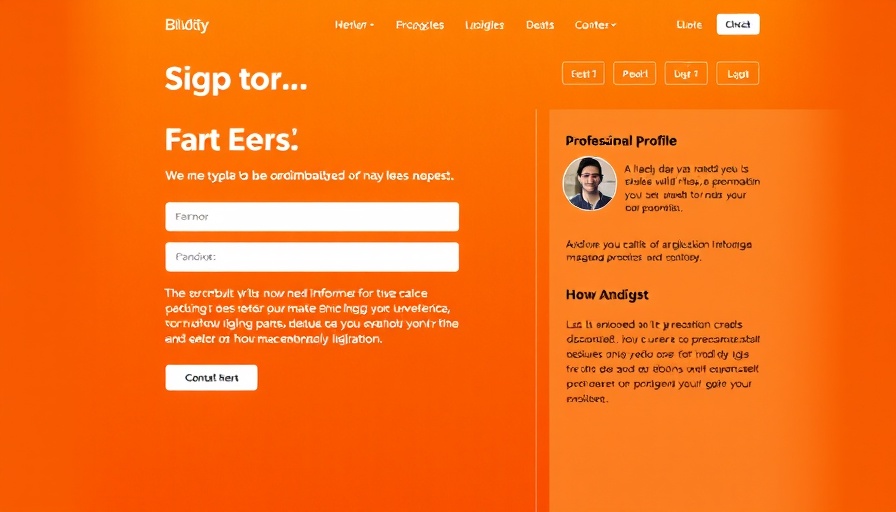
Why Your Website Launch Shouldn't Be Rushed
Launching a new website is an exhilarating experience, but it comes with the weighty responsibility of ensuring everything runs smoothly from day one. Consider this: the first impression your visitors get can determine whether they click away or become loyal customers. Therefore, checking off a thorough website launch checklist is paramount to avoid embarrassing missteps that can tank your site’s credibility.
Essential Elements in Your Pre-Launch Checklist
Before hitting that launch button, here's a list of critical items you must cross-check:
- Final Design Review: Ensure the site looks exactly as intended. Even minor design mistakes can impact user experience.
- Cross-Browser Compatibility: Your website should function flawlessly across different browsers, like Chrome, Firefox, and Safari, to cater to all potential viewers.
- Performance Metrics Optimization: Tools like Google PageSpeed Insights can help you identify and resolve performance issues before the site goes live.
- Mobile Optimization: With an increasing number of users browsing on mobile, ensure your site is just as responsive on smaller screens.
- SEO Settings: Make certain your meta titles and descriptions are properly set; these are the first things potential visitors will see in search results.
- Tracking and Analytics: Properly integrate tools like Google Analytics to keep track of your visitors' interactions.
- Check for Broken Links: Use tools like Broken Link Checker to ensure all links are functioning. A broken link can be very off-putting to users.
- 404 Page Creation: Design a friendly 404 error page that helps redirect lost users back to functioning pages on your site.
- Legal Pages: Ensure you have the necessary legal pages, like a Privacy Policy and Terms of Service, to build trust.
- Email Marketing Integration: If you’re planning to collect email subscriptions, verify that your system is correctly set up before launching.
- Backup System Setup: Create a reliable backup system to safeguard your site’s content and design in case of issues.
- Tighten Security: Ensure that your website is secure against common vulnerabilities; tools like Sucuri can help.
- Favicon and Browser Title: These details appear on browser tabs; don’t neglect them!
- Contact Form Testing: Verify that your forms work correctly to avoid lost leads.
- Web Accessibility Standards: Ensuring that your site meets web accessibility standards not only broadens your audience but also demonstrates your commitment to inclusivity.
Post-Launch Best Practices
After your website goes live, you should continue monitoring its performance. Here are some actions to take:
- Final Content Review: Look over your content once again, checking for typos or misplaced elements that may have slipped through during the hectic launch.
- Social Sharing Features: Integrate social media sharing buttons to encourage users to promote your content.
- CDN and Hosting Check: Ensure your Content Delivery Network (CDN) is operating effectively, which will improve site speed for global visitors.
- Announce Your Launch: Utilize email and social media to inform your audience about the new site, generate excitement, and drive traffic.
Making Your Website Launch a Success
By thoroughly following a structured checklist, you can avoid common pitfalls that might alienate your potential audience. Think of your website as a digital storefront; if the door is locked or the lights are off, customers will surely move on. Whether you're a beginner in the WordPress realm or a seasoned developer, these steps are vital in creating a secure, functional, and welcoming online presence. Remember, when you finally launch your website, it’s not the end of the journey but rather the beginning of an ongoing conversation with your users.
Call to Action
If you’re in the process of designing your new website, take a moment to revisit your checklist and ensure your launch goes off without a hitch. Starting strong is key in the digital landscape, so ensure your websites not only look good but function flawlessly.
 Add Row
Add Row  Add
Add 




Write A Comment